Flower Glossary is reader-supported. When you buy through links on our site, we may earn an affiliate commission.
If you enjoyed our post featuring the top 5 types of daisies, along with growing tips, you’ll love our list of 27 different types of daisies. From popular and colorful gerbera daisies to yarrow, you’re sure to find a favorite.
Table of Contents
African Daisy
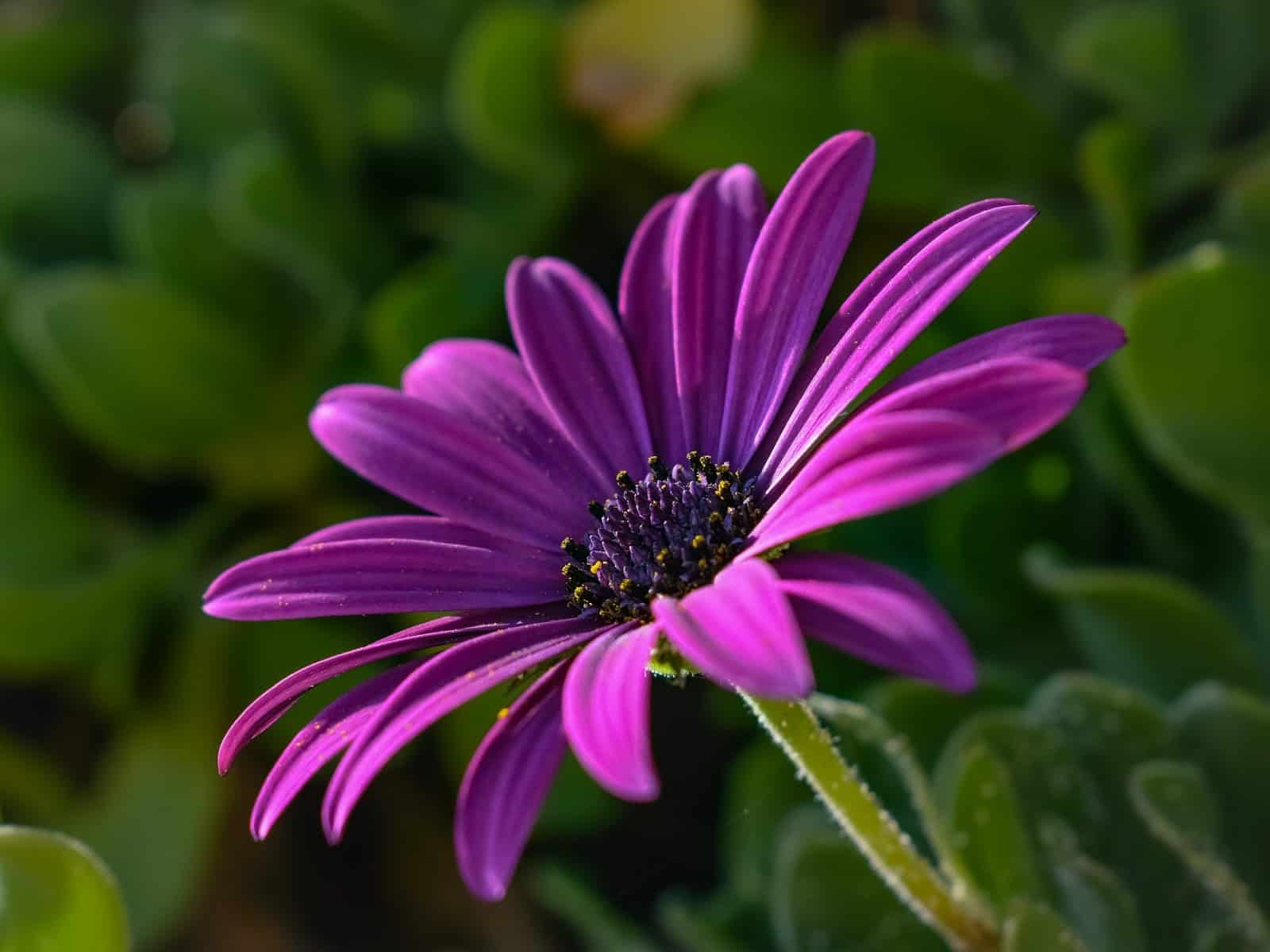 The African Daisy (Osteospermum) is originally from – you guessed it – Africa. Due to its origin it requires conditions similar to those found in Africa.
The African Daisy (Osteospermum) is originally from – you guessed it – Africa. Due to its origin it requires conditions similar to those found in Africa.
- Prefers hot climates
- Full Sun
- Well-drained soil and can tolerate dry soil
- Can benefit from extra fertilizer
Ageratum
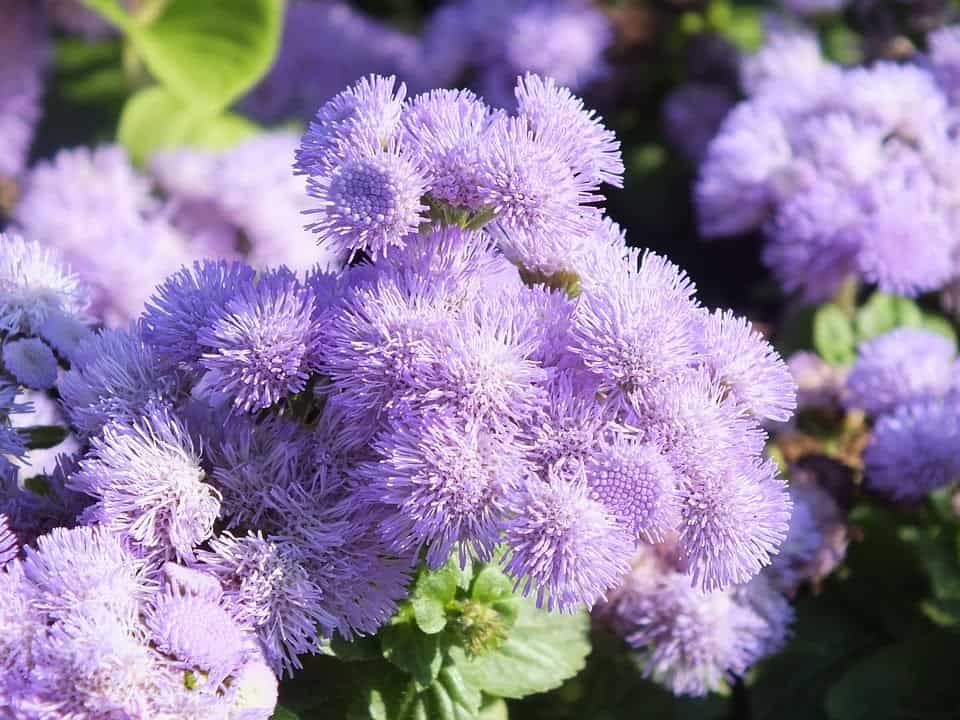 Ageratum is a native of Mexico and comes in soft, round, fluffy flowers. You can also find them in various shades of blue, white, pink, and purple.
Ageratum is a native of Mexico and comes in soft, round, fluffy flowers. You can also find them in various shades of blue, white, pink, and purple.
- Grown as an annual but can be a perennial in Zones 10-11
- Full sun to partial shade
- Well-drained soil
Anthemis
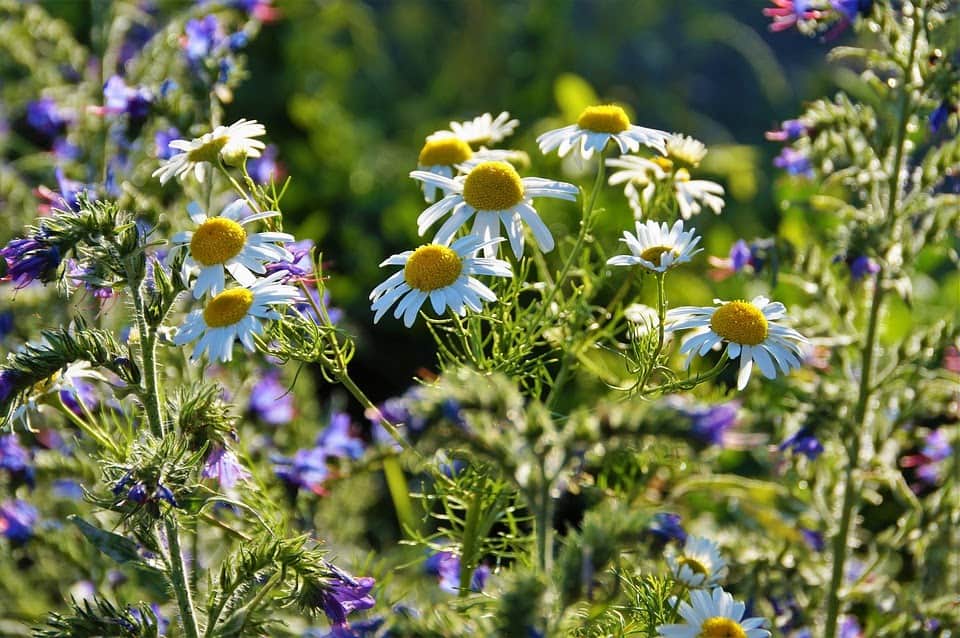 The Anthemis has creamy white petals with a yellow center. They are also referred to as Mayweed or Chamomile.
The Anthemis has creamy white petals with a yellow center. They are also referred to as Mayweed or Chamomile.
- Full sun
- Well-drained not too wet soil
- Trim after flowering for further blooms
Arctotis Acaulis
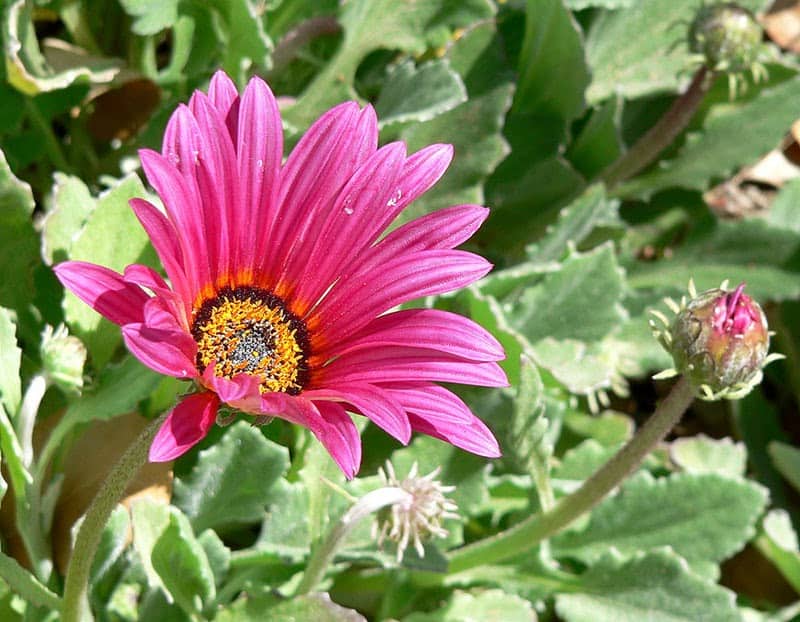
Photo Source: https://www.greenandvibrant.com/types-of-daisies
Arctotis acaulis is a perennial that is best grown as an annual. They grow in orange, yellow, salmon, magenta, or cream.
- Full sun
- Well-drained, well-composted, fertile soil
- Give plenty of water during germination and growing period
- Cut off old flower heads to increase flowering time
Arctotis Aspera
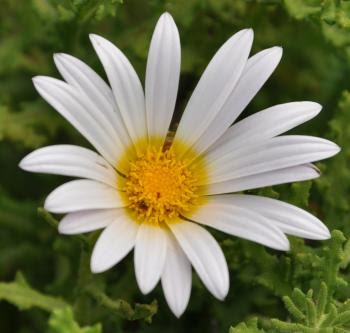
Photo Source: http://pza.sanbi.org/arctotis-aspera
Arctotis aspera is a soft-wooded perennial that will flower for most parts of the year. Once it is established, it requires hardly any water.
- Full Sun
- Sandy, loam soil
- Flowers in spring, early summer, and winter
Arctotis Grandis
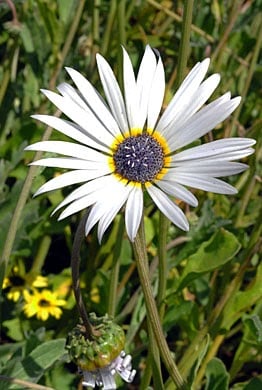
Photo Source: rightplants4me.co.uk
Arctotis Grandis also is known as the “Blue-Eyed African Daisy” has satiny-white petals with a hint of blue and a very distinct blue center.
- Plant in early spring
- Fairly drought-resistant and do not require a lot of watering
- Protect from frost
- Full sun
- Free draining soil
Arctotis revoluta
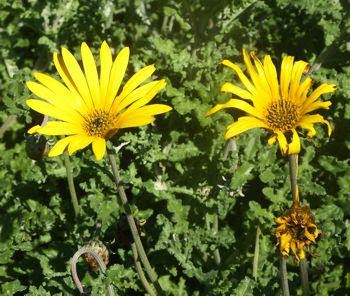
Photo Source: pza.sanbi.org
Arctotis revoluta is a fast-growing shrub that is suited for coastal or fynbos gardens. You can find it on rocky, granite outcrops and coastal sands.
- Light, well-draining soil
- Keep away from frost
- Do not plant too close together and they will thrive better
Argyranthemum
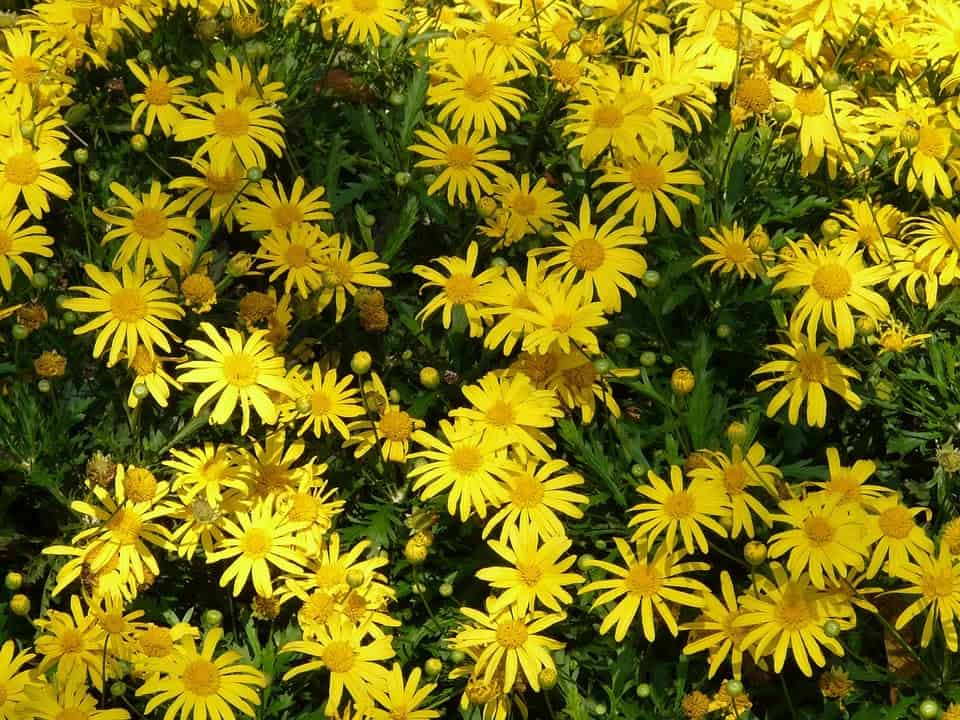 Argyranthemum is an annual flower. It will attract butterflies and other pollinating insects to your garden.
Argyranthemum is an annual flower. It will attract butterflies and other pollinating insects to your garden.
- Full sun to light shade
- Moist, well-drained soil rich in organic matter
- Trim off dead flowers after they fade
Aster
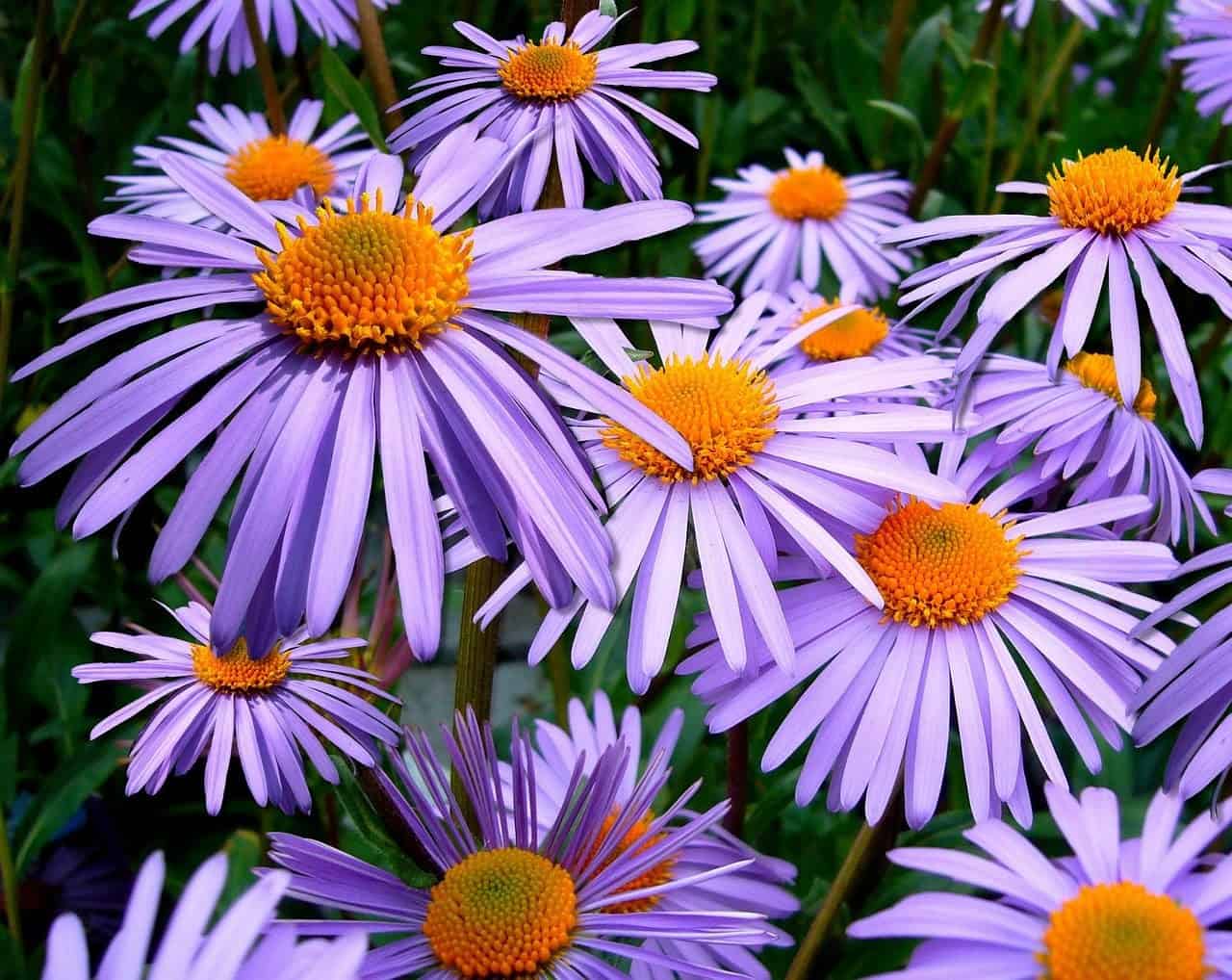 The Aster has a bright yellow/gold center and flowers that grow in pink, purple, and white. They are also perennial flowers with starry-shaped flower heads.
The Aster has a bright yellow/gold center and flowers that grow in pink, purple, and white. They are also perennial flowers with starry-shaped flower heads.
- Full sun to partial shade
- Loamy soil
- Hardy to Zones 3-8
- Will attract butterflies
Barberton Daisy
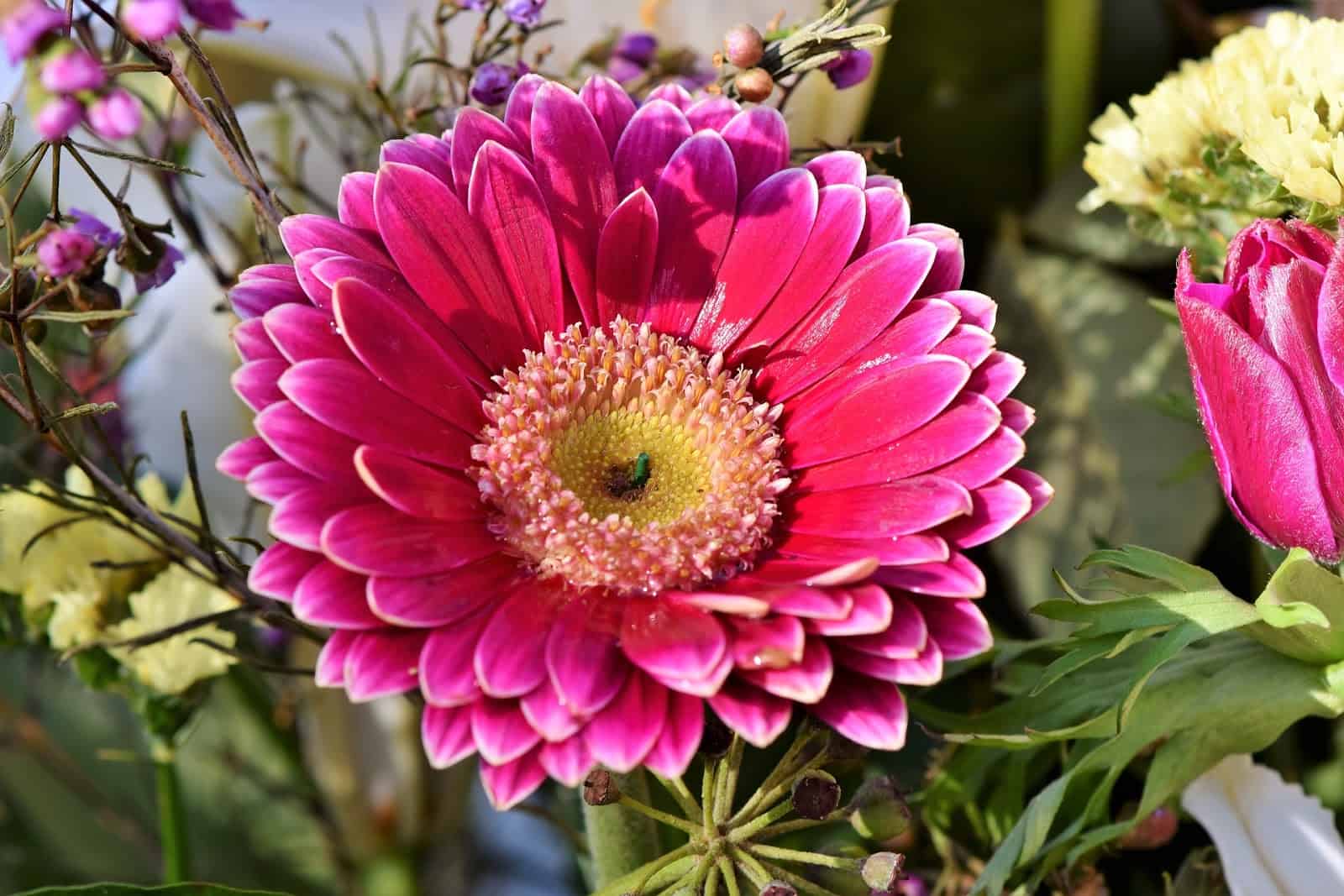 The Barberton daisy also known as Gerbera Jamesonii or Transvaal or Gerbera daisy has a large range of striking colored flowers.
The Barberton daisy also known as Gerbera Jamesonii or Transvaal or Gerbera daisy has a large range of striking colored flowers.
- Full sun or partial shade
- Moist soil
- Do not tolerate frost
Bellis Annua
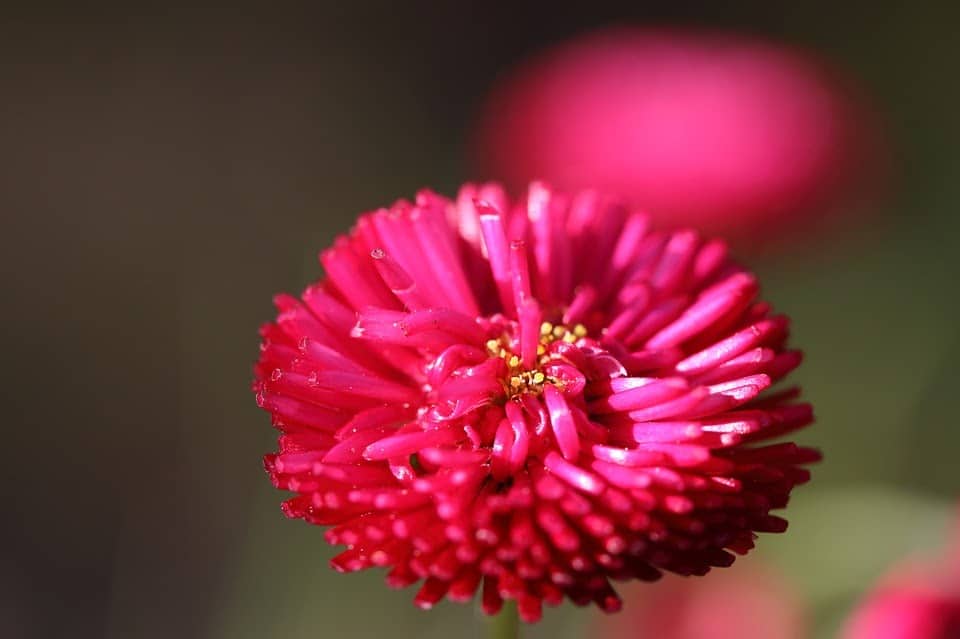 This is the only annual Daisy in the Bellis genus. They are a bit smaller than a common daisy.
This is the only annual Daisy in the Bellis genus. They are a bit smaller than a common daisy.
- Hardy to zones 3-7
- Full to partial sun
- Grows well in potting soil with good drainage
Canary Island Marguerite
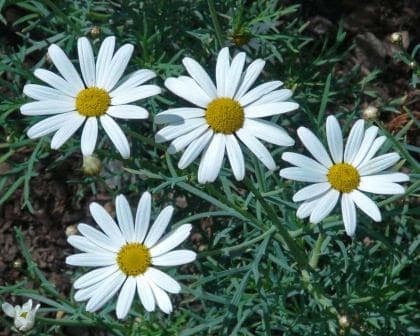
Photo Source: gardensonline.com.au
Canary Island Marguerite or Royal Haze is a species native to Canary Islands but naturalized in the US and Australia. It has a striking blue-green foliage and the flowers have a typical daisy appearance.
- Full Sun
- Moist and well-drained soil
- Hardy to zones 8-11
Cape marguerite
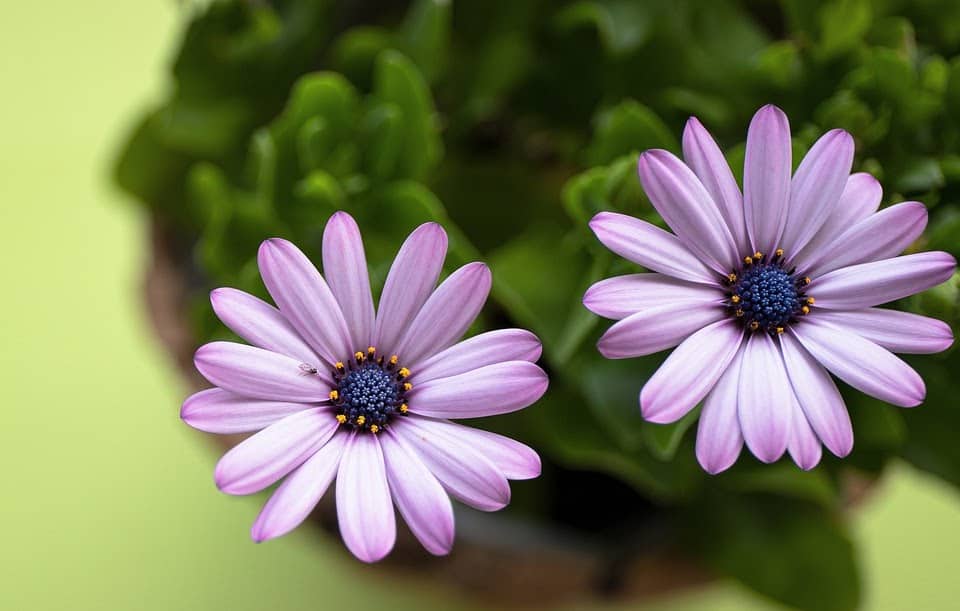 The Cape marguerite blooms in yellow and white or purple flowers that are rich in pollen and attract bees. This perennial’s underside of white petals are tinged with blue and have green foliage.
The Cape marguerite blooms in yellow and white or purple flowers that are rich in pollen and attract bees. This perennial’s underside of white petals are tinged with blue and have green foliage.
- Full sun
- Well-draining soil
- Protect from frost
Chrysanthemum indicum
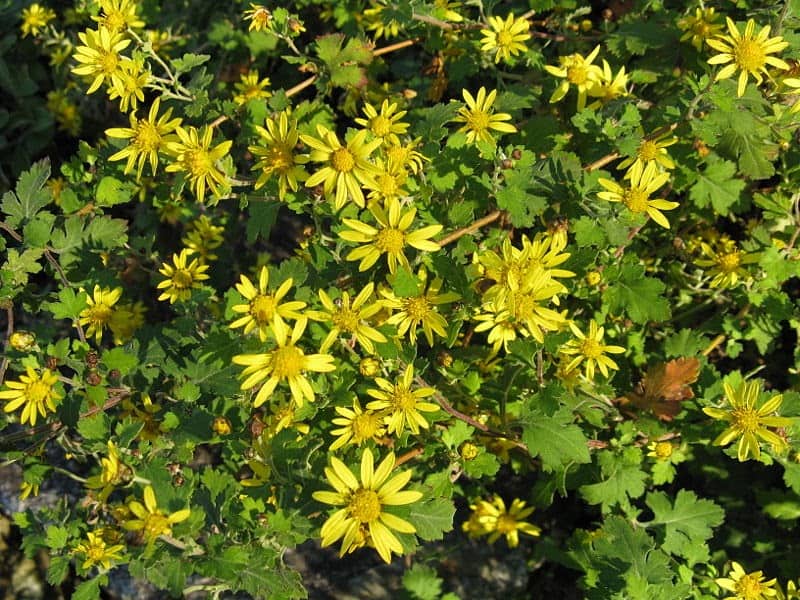
Photo Source: Wikipedia.org
Chrysanthemum indicum bloom from August-October. They bloom in yellow or white flowers with yellow pollen.
- Full sun
- Well-drained fertile and moist soil
- Hardy to all zones as annual and 7-12 as perennial
Chrysanthemum morifolium
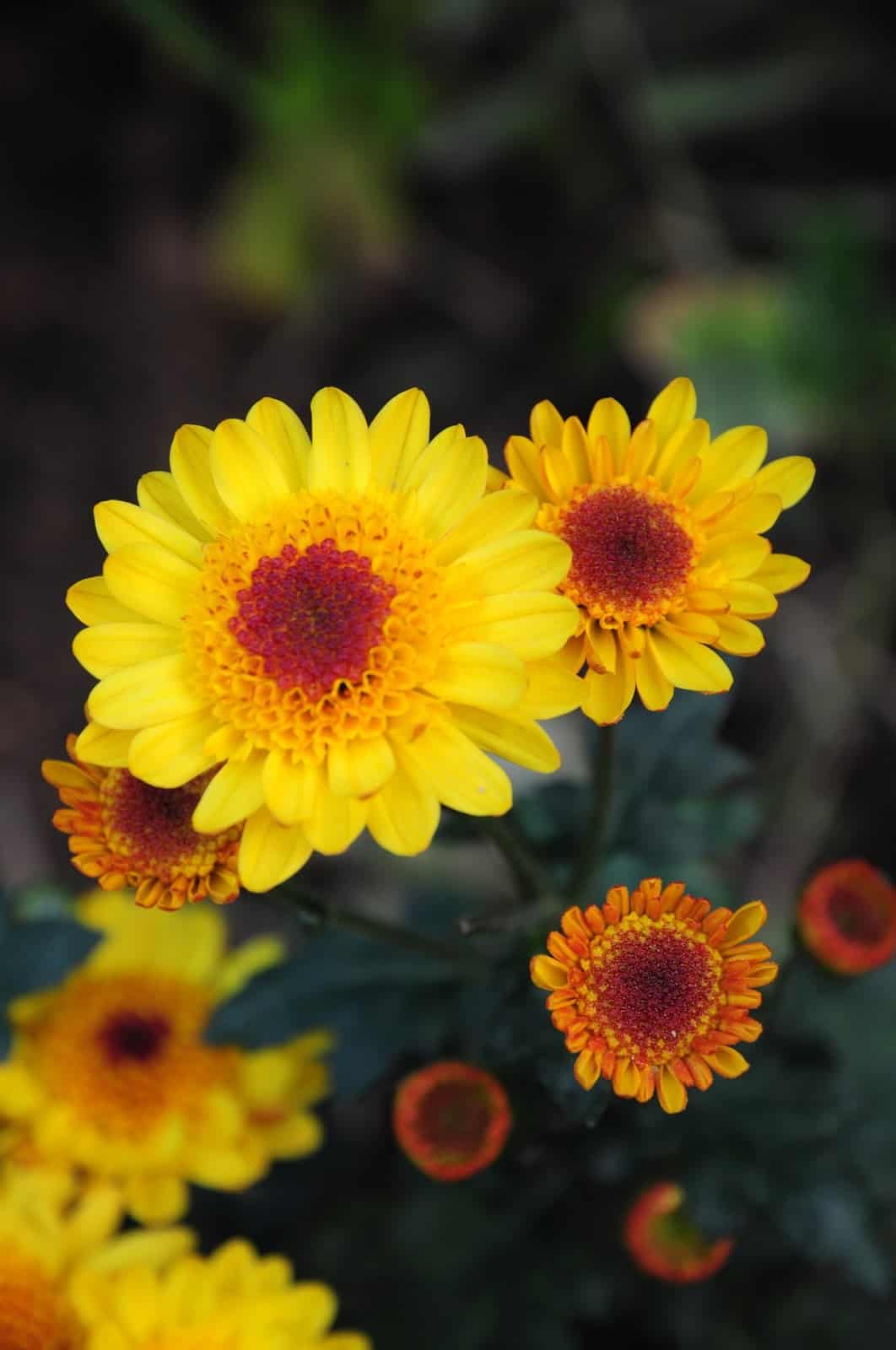 Chrysanthemum morifolium is a very popular indoor/patio plant often sold as a gift. They come in a wide array of colors such as orange, pink, yellow, red, white, and purple.
Chrysanthemum morifolium is a very popular indoor/patio plant often sold as a gift. They come in a wide array of colors such as orange, pink, yellow, red, white, and purple.
- Full sun or bright light
- Hardy to zones 10-11
- Bloom summer to autumn
Coneflower
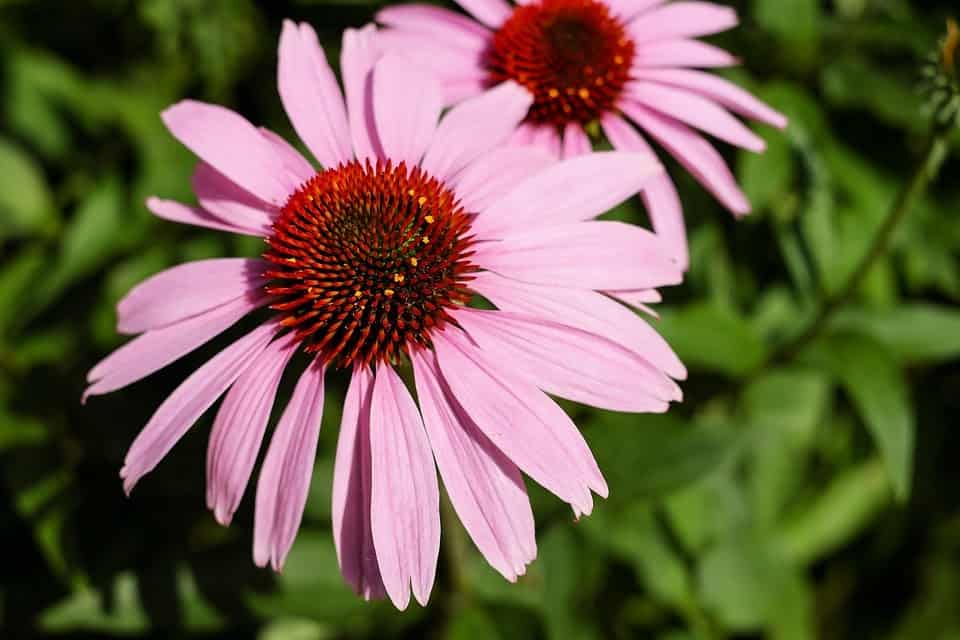 Coneflowers are also known as Echinacea will attract bees, birds, and butterflies to your garden. They are perennial plants that can grow 2-4 feet in height.
Coneflowers are also known as Echinacea will attract bees, birds, and butterflies to your garden. They are perennial plants that can grow 2-4 feet in height.
- Full sun
- Well-drained soil
- Drought tolerant
Coreopsis
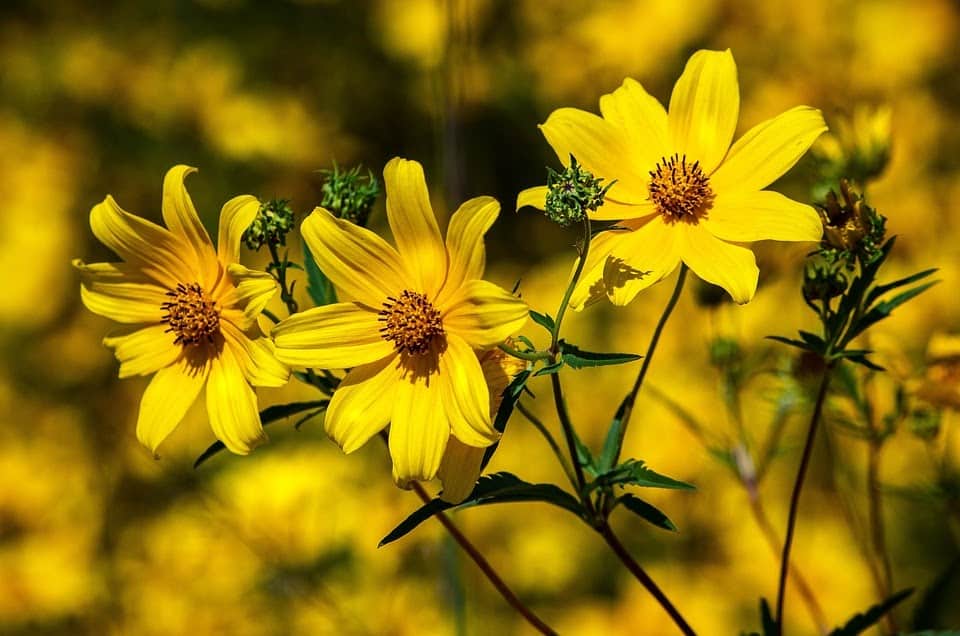 Coreopsis is a low maintenance and drought tolerant, long blooming plant. They are also known as “Tickseed.”
Coreopsis is a low maintenance and drought tolerant, long blooming plant. They are also known as “Tickseed.”
- Full sun to partial shade
- Well-drained and sand soil
- Hardy to zones 4-9
English Daisy Coreopsis
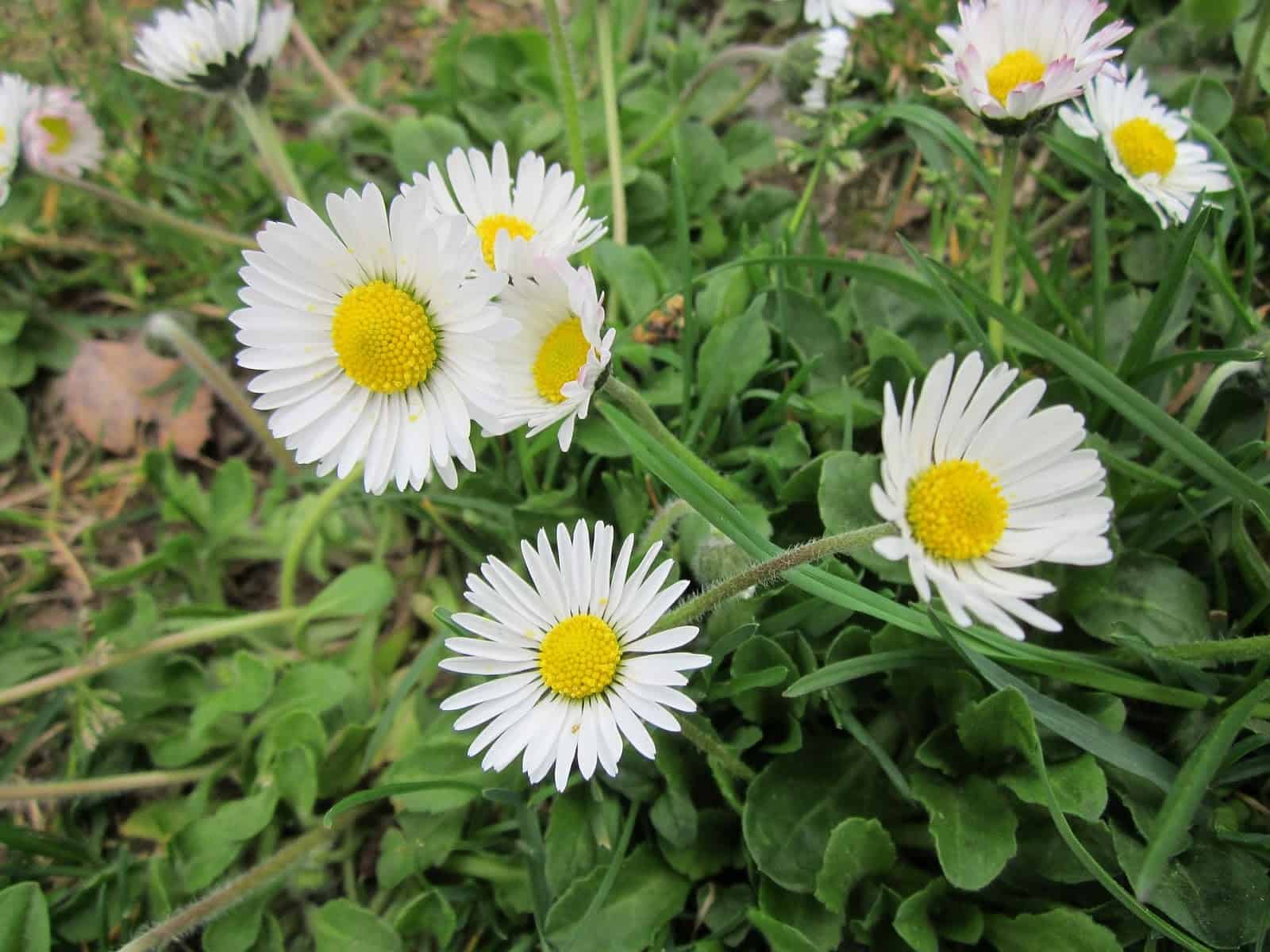 The English Daisy has a yellow disk-like center surrounded by delicate petals which can be red, white, or pink. They easily reseed and can even be considered a weed when growing in certain areas of a lawn.
The English Daisy has a yellow disk-like center surrounded by delicate petals which can be red, white, or pink. They easily reseed and can even be considered a weed when growing in certain areas of a lawn.
- Hardy to USDA zones 4-10
- Poor or lean soil but keep moist
- Full sun or partial shade
Gerbera Daisy
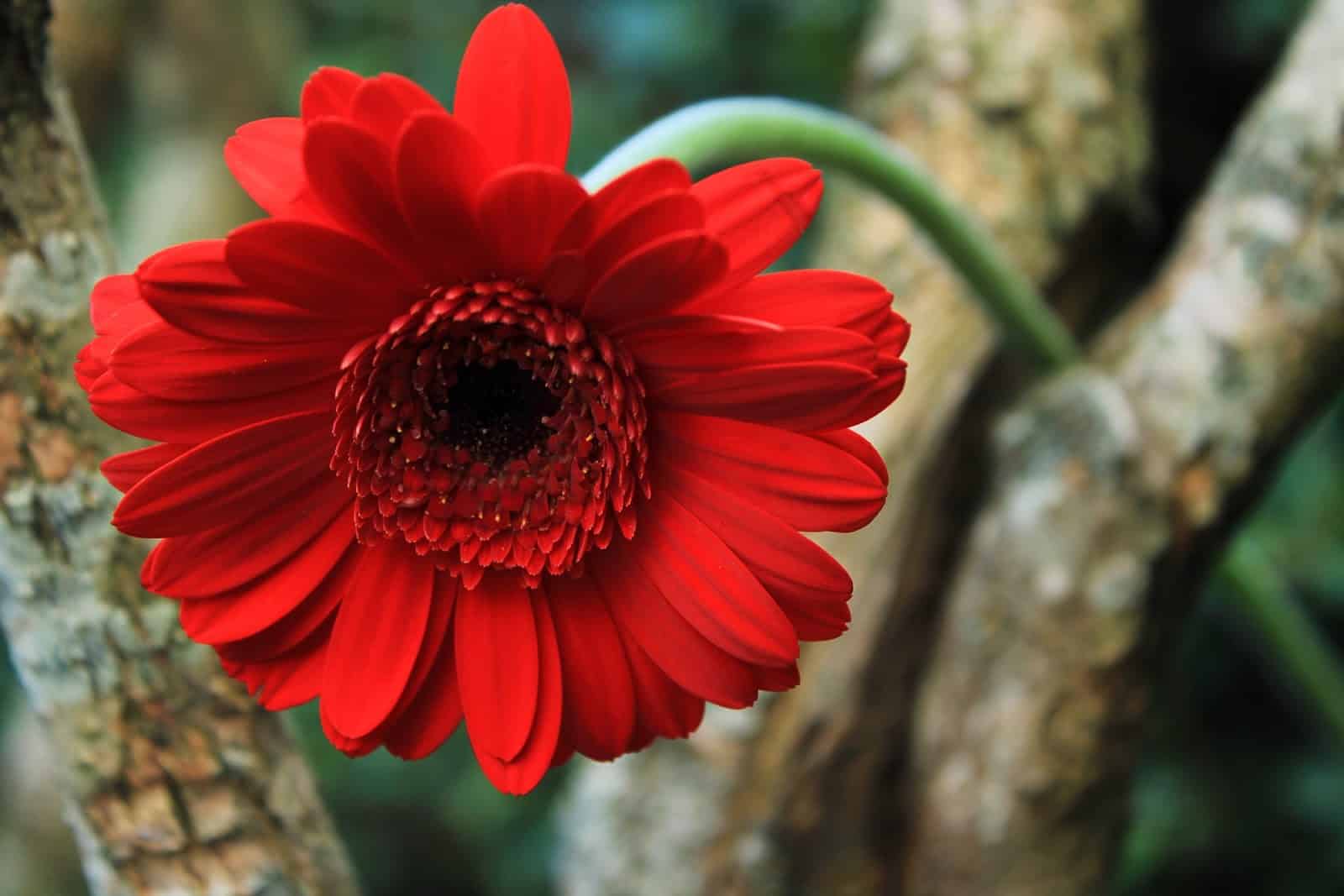 Gerbera Daisies are grown for their bright and cheerful flowers. They come in various sizes and colors. Some colors include white, pink, yellow, orange, salmon, and more.
Gerbera Daisies are grown for their bright and cheerful flowers. They come in various sizes and colors. Some colors include white, pink, yellow, orange, salmon, and more.
- Full sun
- Sandy soil with a little bit of compost
- Crown rot can be common so don’t plant crowns too deeply
Gerbera viridifolia
 Gerbera viridifolia produces stunning cream, purple, or mauve daisies. It is also a stemless perennial herb.
Gerbera viridifolia produces stunning cream, purple, or mauve daisies. It is also a stemless perennial herb.
- Full sun
- Well composted area
- Need little to no watering in winter
Marguerite Daisy
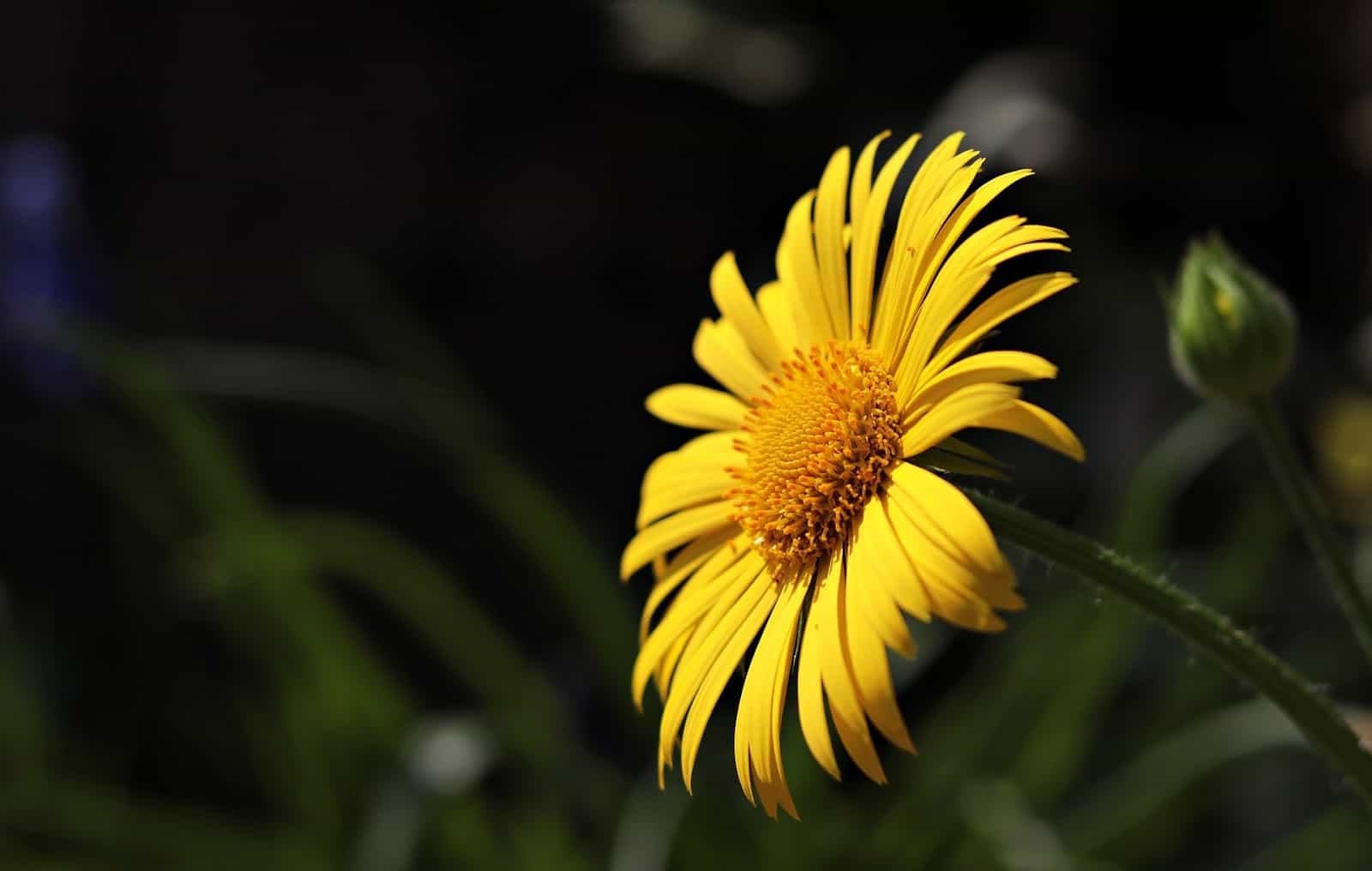 The Marguerite Daisy is a perennial shrub native to the Spanish canary Islands but has also been naturalized in the US and Italy. It flowers in summer and spring in beautiful shades of white, yellow, and pink.
The Marguerite Daisy is a perennial shrub native to the Spanish canary Islands but has also been naturalized in the US and Italy. It flowers in summer and spring in beautiful shades of white, yellow, and pink.
- Hardy to zones 9-11
- Prefer full sun but will do okay in partial sun
- Well-drained soil
- Do not over water
Monoptilon Bellidiforme – Daisy Desertstar
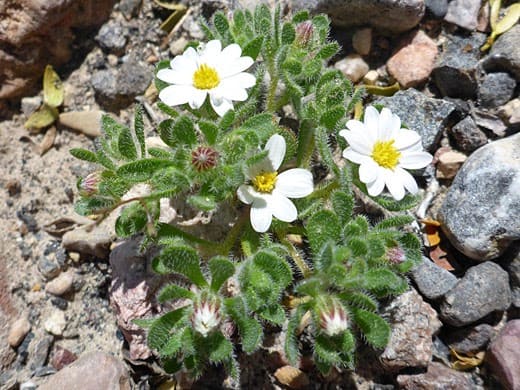
Monoptilon Bellidiforme, Daisy Desertstar has bright green leaves covered with bristly white hairs. They typically grow in sandy desert habitats and thrive in dry climates.
Oxeye Daisy
 The Oxeye Daisy is a perennial flower that is similar to the Shasta daisy. It has a yellow eye surrounded by white petals. Please be aware that this flower can easily invade your landscape and some control measures may need to be put in place.
The Oxeye Daisy is a perennial flower that is similar to the Shasta daisy. It has a yellow eye surrounded by white petals. Please be aware that this flower can easily invade your landscape and some control measures may need to be put in place.
- Hardy to Zones 3-8
- Full sun and benefit in afternoon shade in hotter regions
- Heavy clay, wet soil, or sand
- Rich, fertile soil
Shasta Daisy
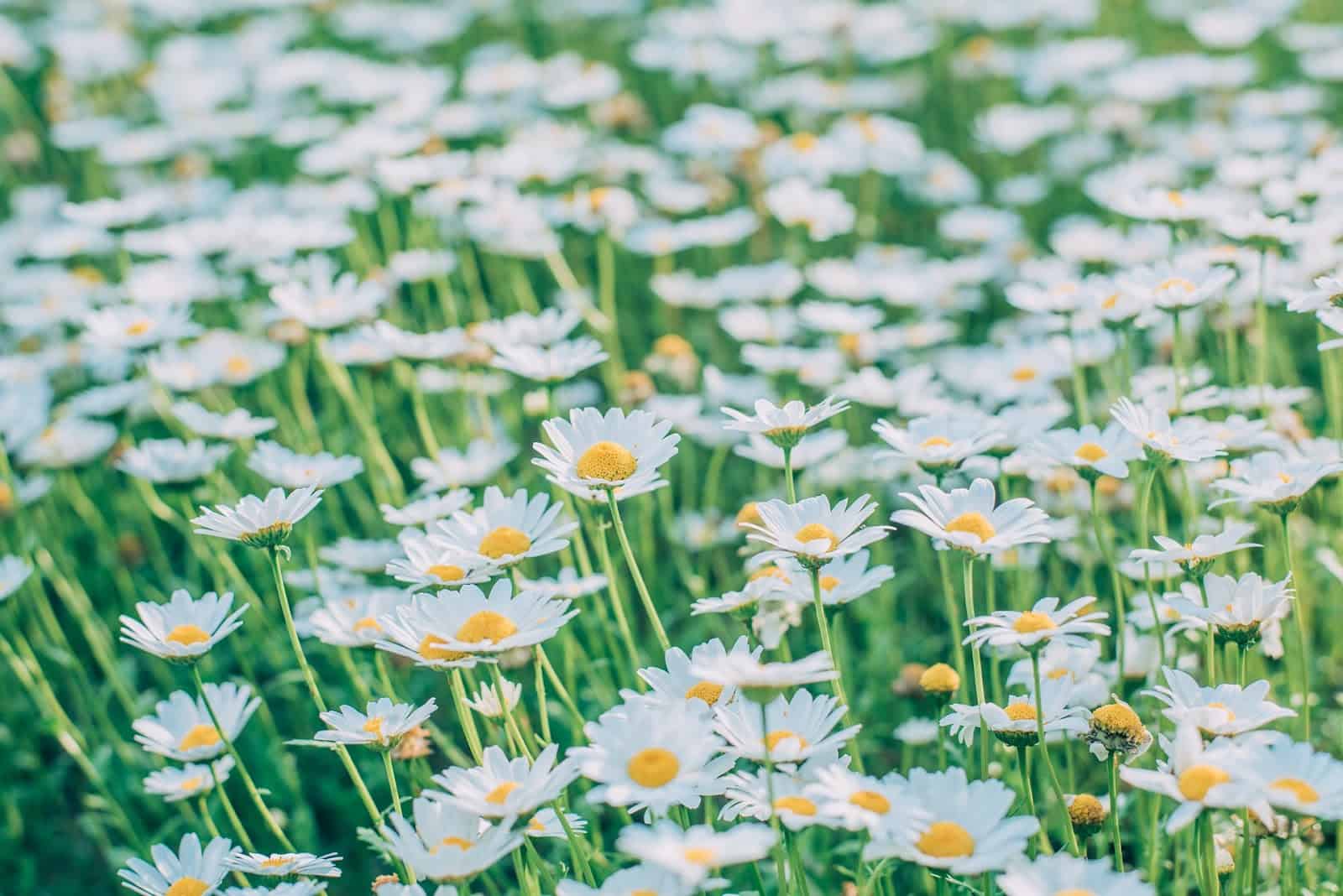 The Shasta daisy is a perennial that resembles an English daisy with larger, more robust blooms. It is actually a hybrid using three daisies including the Wild Oxeye daisy.
The Shasta daisy is a perennial that resembles an English daisy with larger, more robust blooms. It is actually a hybrid using three daisies including the Wild Oxeye daisy.
- Full sun
- Moderately fertile soil
- Water during the summer if rainfall is less than 1 inch a week
Townsendia florifer
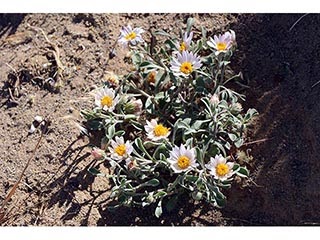
Photo Source: Wildflower.org
Townsendia florifer has a daisy-style flower and is a biennial wildflower that can be found across the US. It has lots of flower heads with pink or white petals with a golden-ring center.
- Member of the Aster family
- USDA Native Status: L48 (N)
- Blooms from April-August
Townsendia incana
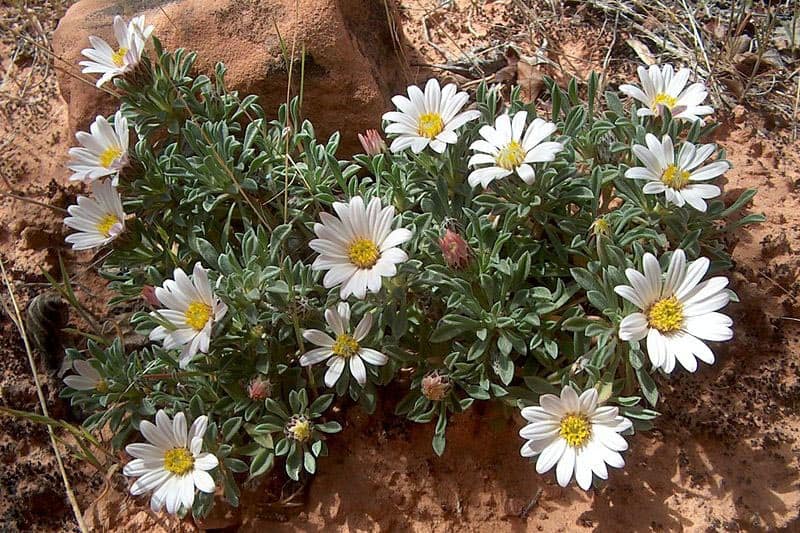
Photo Source: https://www.greenandvibrant.com/types-of-daisies
Townsendia incana have white hairs on the stems that almost make them appear silver. They are also known as the Easter Daisy or Silvery Townsendia.
- Blooms from Spring-Fall
- Sandy soil
- Full sun
Yarrow
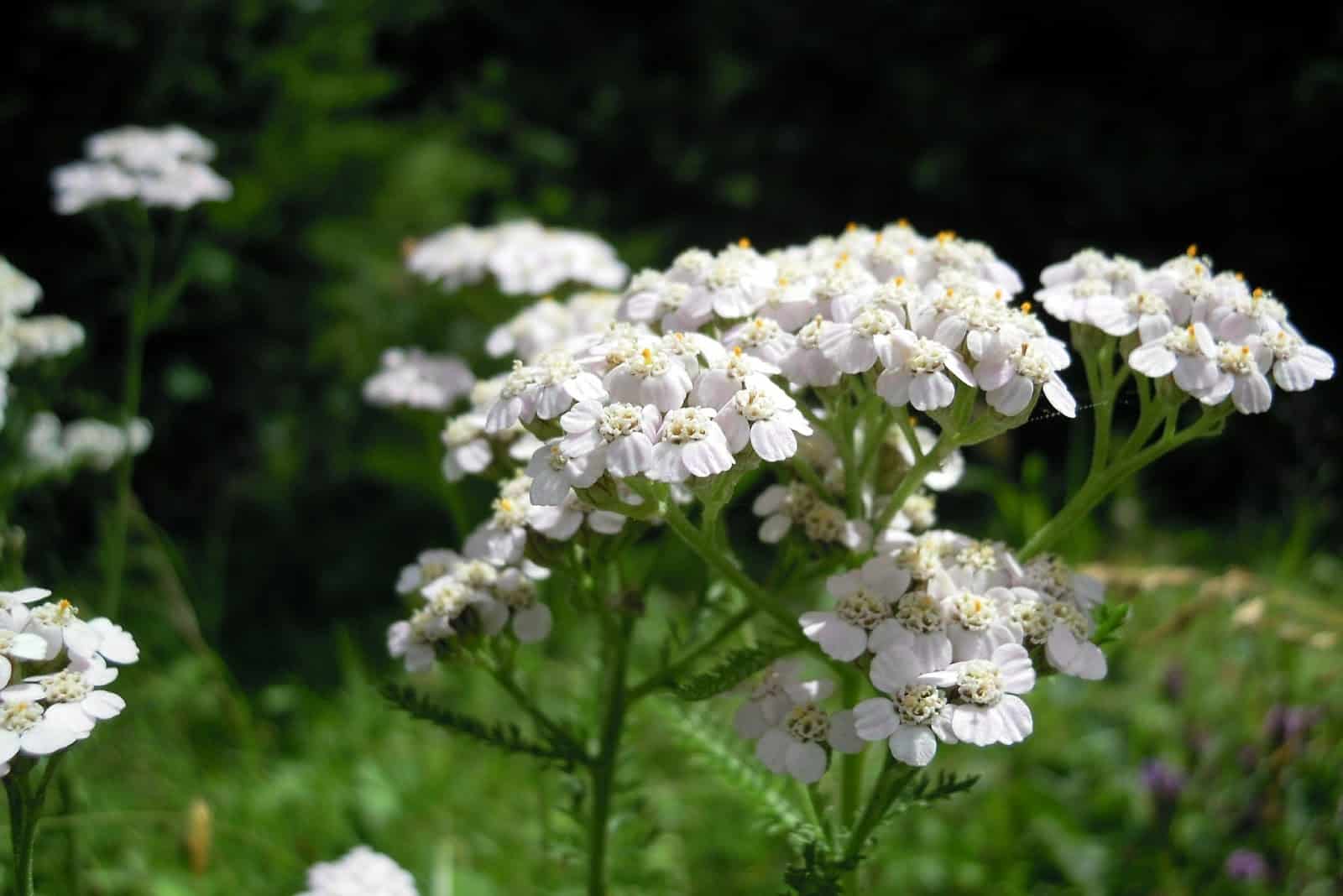 The Yarrow is an easy-to-care-for flower that sprouts tight packs of tiny flowers that have a sweet aroma.
The Yarrow is an easy-to-care-for flower that sprouts tight packs of tiny flowers that have a sweet aroma.
- Well-drained soil
- Thrive in hot and dry conditions
- Perennial flower
We hope you’ve enjoyed our post about types of daisies. If you want more details on growing & care, check out our other post about daisies.